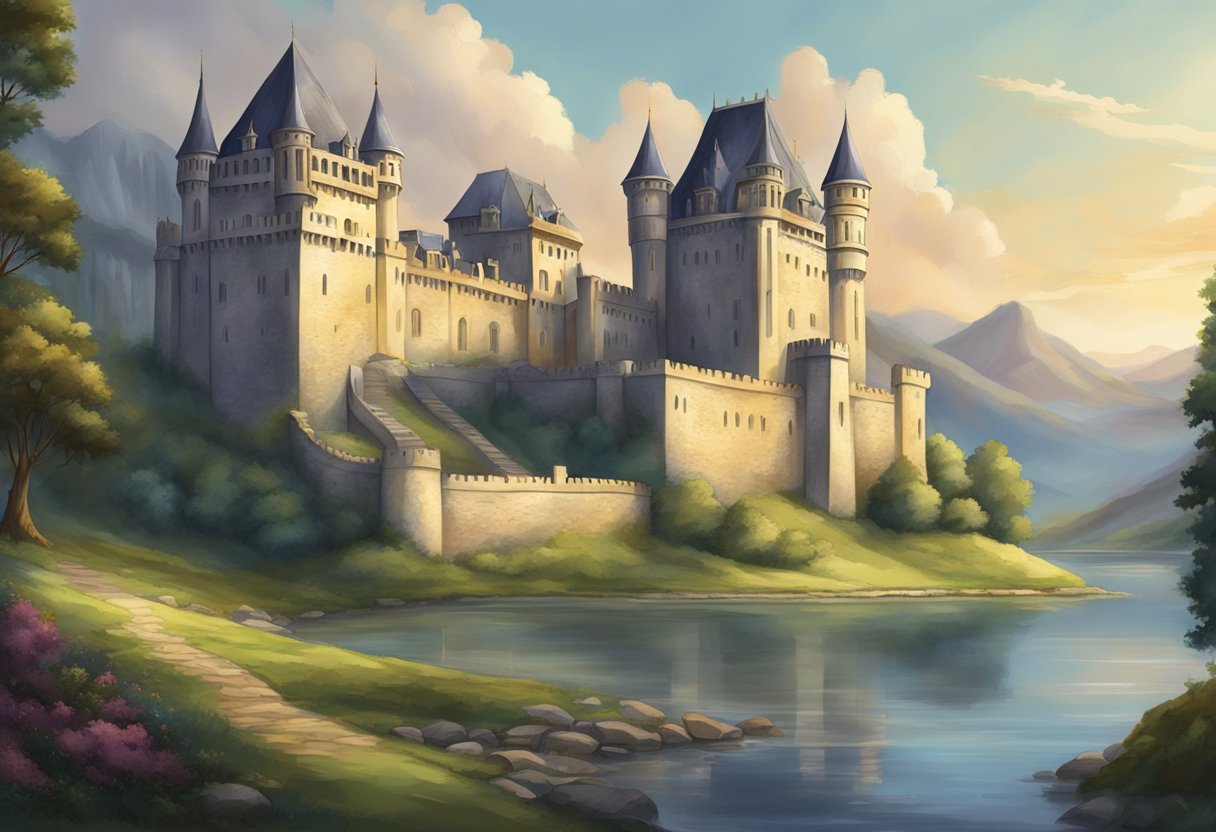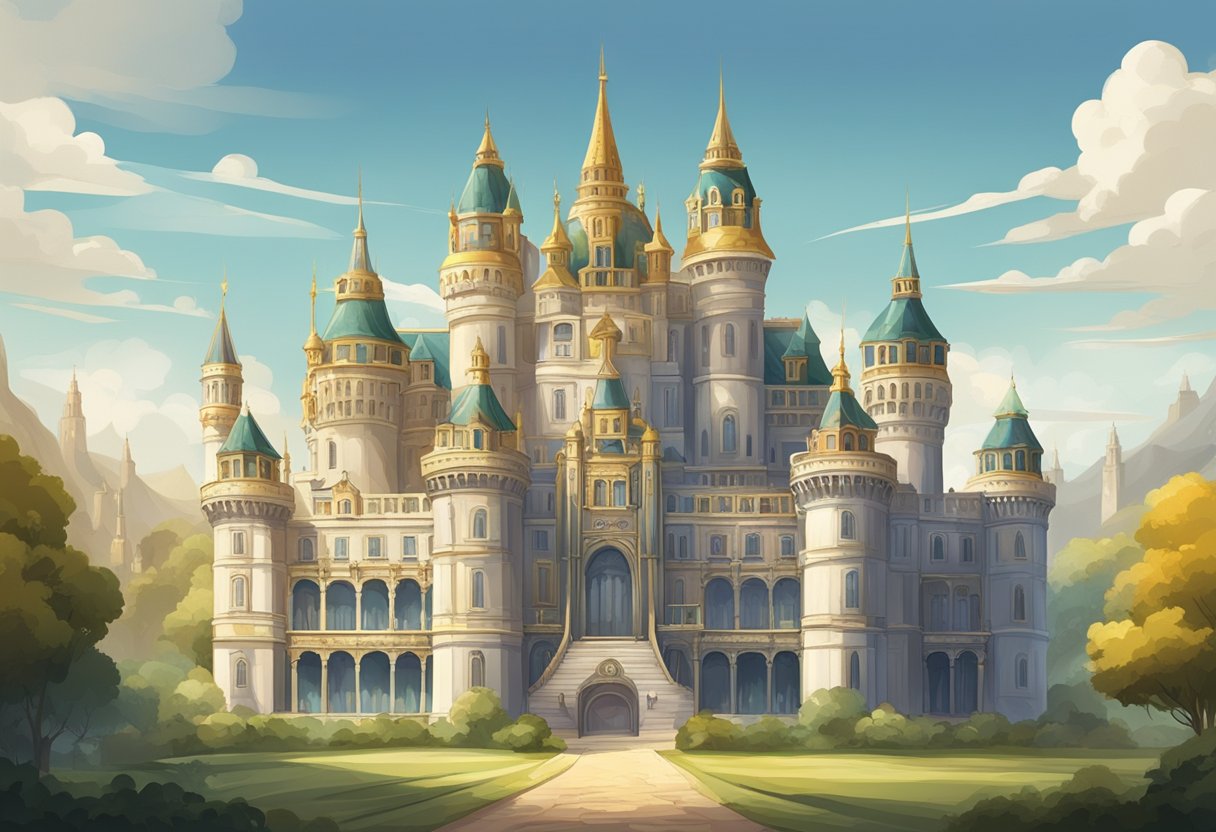When pondering the grandiose structures of history, the words “castle” and “palace” often conjure images of royal splendor and fortified grandeur. Yet, despite both terms being casually tossed around when describing the lavish lodgings of yesteryear’s elite, they are not interchangeable. To put it simply, a castle is the muscle-bound cousin with moats and murder holes, primed for battle, while a palace is the charismatic sibling that dazzles with stunning arches and gold-gilded ballrooms.

Diving into the architectural anatomy of these structures, castles were built to withstand sieges, sporting thick walls and strategic positions often atop hills or surrounded by water for defense. Palaces, on the other hand, were the epitome of luxury and power, designed to impress and indulge the whims of nobility rather than repel invaders. They served as opulent residences, hosting grand events and showcasing the wealth and status of their royal inhabitants. Both castles and palaces are intrinsically linked to the social hierarchy of their times, standing as lasting monuments to medieval majesty and the pursuit of domestic dominance.
Key Takeaways
- Castles and palaces serve different historical purposes, aligned with defense and splendor respectively.
- While sharing a connection to nobility, the varying architectural features set each apart.
- They are enduring symbols of past societies, reflecting the distinction between might and luxury.
Defining the Grand Abodes
https://www.youtube.com/watch?v=6hZjATrQBEo&embed=true
When royal real estate is the topic of discussion, castles, and palaces are far from quaint cottages. These monumental structures not only differ in purpose but are a dichotomy of defense versus decadence.
What Is a Castle?
Castles are the tough guys of the architectural world, the ones with muscles of stone and moats for protein shakes. They stand as fortified structures, often of the medieval period, with a laundry list of defensive features including:
- Thick walls: Fit to withstand a siege or an angry dragon.
- Battlements: Perfect for raining arrows on uninvited guests.
- Towers: For spotting trouble from afar, like an overzealous door-to-door salesman.
- Moats: Because a castle without a moat is like a knight without his shining armor.
These stone-guarded fortresses served as both royal residences and military strongholds, places where one could sip tea while keeping an eye out for the enemy. Their primary goal was to protect the monarch and his/her people, much like a bouncer at the royal disco.
What Is a Palace?
Palaces, on the other hand, are the show ponies of the regal architectural circuit. They drop the drawbridges and raise the chandeliers, focusing on:
- Luxurious spaces: Where the opulence level is over 9000.
- Aesthetics over arrows: Because why fend off an army when you can have another ballroom?
- Ceremonial venues: For every occasion from coronations to Tuesday afternoon tea parties.
Palaces were built to flaunt wealth and artistry, to stun peasants and nobles alike with a splendor that says, “We’re royalty, and we’ve got the gold-leaf thread count to prove it!” These grand residences didn’t bother much with defense—they had their beefy castle cousins for that. Instead, palaces prioritized pomp and pageantry, serving as the headquarters for sashes, scepters, and the occasional rager thrown by the monarch. They embody luxury, hosting royalty in settings designed to impress everyone from the court jester to visiting dignitaries.
Form Follows Function
https://www.youtube.com/watch?v=DaxODmFnN6U&embed=true
In the intriguing world of monumental residences, one must chuckle at the stark differences in purpose between castles and palaces. Function dictates form, and oh how amusingly their forms doth follow!
Castles: Not Just for Show
Castles weren’t simply medieval McMansions; no, siree. They were as fortified as a dragon’s keep. With features like moats, drawbridges, and arrow slits, they’re the kind of place one would fortify themselves in if they expected an uninvited army for tea.
- Purpose: Primarily military defense.
- Features: Built to withstand sieges; less windows, more walls.
- Comfort: Spartan interiors for knights, not knick-knacks.
Palaces: It’s All About the Glamour
Palaces, on the other hand, were built to impress and express. One only needs to glimpse their gilt-edged features to feel underdressed. They’re not geared for warfare but for flair, festivity, and the finer things in life.
- Purpose: Display wealth and power; a residence for royalty.
- Features: Grand halls; luxurious adornments to bedazzle visitors.
- Elegance: Splendor and comfort are the orders of the day.
The discerning eye can vividly cipher the differences between these stately structures – one is a fort with might, the other, a glowing beacon of opulence, and neither would be caught dead masquerading as the other!
A Tale of Walls and Opulence
https://www.youtube.com/watch?v=CGUC-h6cMVo&embed=true
When one gazes upon the formidable walls of a castle or the lavish halls of a palace, it’s crystal clear that these are not just oversized houses. Castles exude strength, palaces whisper of luxury; both hold tales of a bygone era where nobility walked and history was etched into every stone.
Sturdy as a Rock: Castle Walls
Picture this: a moat serpentines around a towering fortress, its waters reflecting the sky and the thick walls rising above. These walls weren’t just for show; they meant business. Able to withstand sieges and the occasional grumpy dragon, castle walls protected those inside with their impressive girth and height. Now, check out the features that made them nearly invincible:
- Moat: A water-filled ditch that said “Keep out” better than a scowling gatekeeper.
- Thick Walls: Often up to 20 feet thick, perfect for keeping out the riff-raff and that pesky next-door conquering kingdom.
- Towers: Ideal for spotting trouble on the horizon (and for the occasional Rapunzel).
Palatial Grandeur: Luxury Living
On the flip side, palaces were like the playgrounds of the overindulgent, where no amount of marble was too much, and gardens were a casual affair sprawling over what could fit a small village. They didn’t need thick walls; their power was in the opulence. Here’s a peek into their lavishness:
- Marble Everything: If it could be marbled, it was. Floors, walls, ceilings, even the kitchen sink, perhaps.
- Artwork Galore: The walls sparkled not from any old paint, but from masterpieces so grand, they could make a grown knight weep.
- Gardens: Lavish arrays of greenery fit for the fanciest garden party every day (crumpets included).
Historical Hangouts of the High and Mighty

The realms of European history are replete with grand structures, from fortifications built for brawn to sumptuous seats of splendor. They are like the extroverted cousins at a family reunion, one flaunting battle scars, the other dripping in jewels.
Witness to Warfare: Castles Through History
Castles sprang up across Europe, dotting the land with their imposing battlements and towers. These fortified structures served as both offensive and defensive hubs during periods of warfare, standing as firm declarations of dominion and showcases of military might.
- 1066: Arrival of Castles in England after the Norman Victory
- Medieval Times: Castles serve as crucial defensive structures across Europe
They were the medieval equivalent of the modern military base, except with more flair, intimidating locals and would-be invaders alike with their stern stone faces.
Centers of Culture: Palaces and Power
In contrast, palaces like Buckingham Palace were the cultural heartbeats of sovereign power, resonating with the arts, opulent banquets, and the sweet whispers of court intrigue.
- Palatine Hill: The birthplace of the concept of palatial living
- Culture Spread: Palaces became epicenters of cultural growth and societal evolution
Palaces didn’t bother with brandishing swords; they were too busy orchestrating symphonies and hosting balls that would have Cinderella green with envy. They were the original influencers, where a side-eye in the corridor could alter the course of history.


Leave a Reply